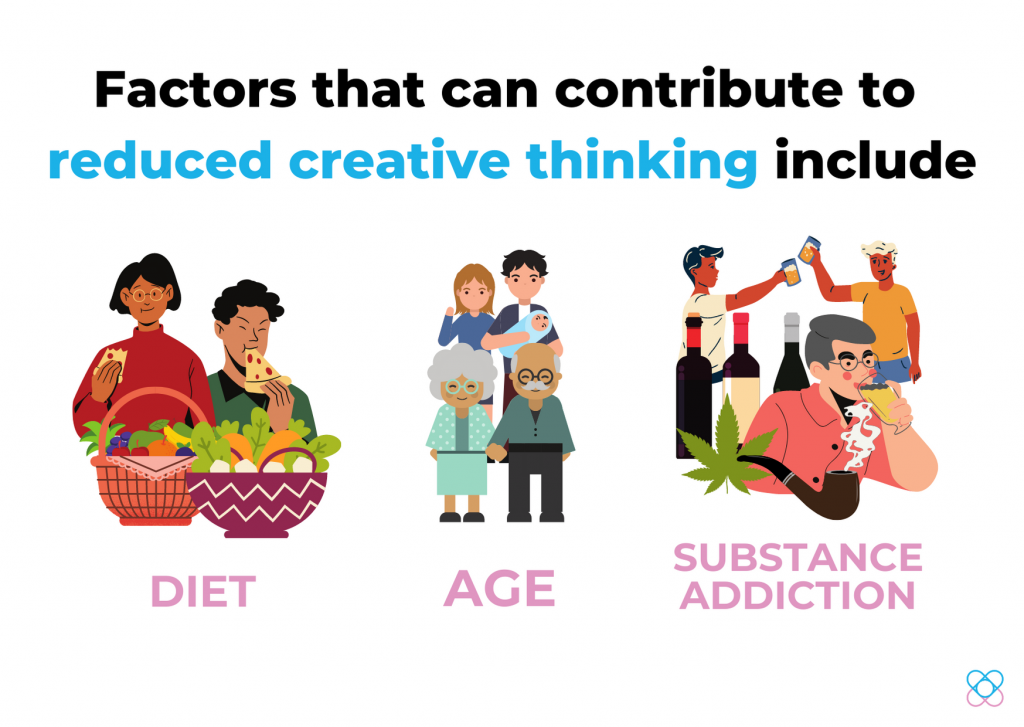
If you’ve ever had to find answers to complex problems, chances are you’ve also experienced a “Eureka!” or “Aha!” moment while you’re solving. This feeling is actually a creative cognitive thought process called insight problem solving (IPS).
As an ‘all-at-once’ process rather than trial-and-error, IPS is important in our everyday activities and socialisations, such as context perception and language comprehension. Because of this, people who are able to use insight are considered intelligent in today’s developing society
However, the ability for non-human species (e.g. elephants) to use insight for solutions suggests that creativity can be explained by evolutionary and biological roots. This information may cause you to ask the following questions:
- What are the factors determining IPS ability, if they are biologically based, and
- How could these concepts allow us to be creative thinkers?
These questions can be answered, surprisingly, by our genetics!
Understanding how we think
To understand the biology of how our brains think creatively, we have to first understand what forms creative behaviour. Through various behavioural performance tests, research indicates that creative thinking processes stem from two distinct thinking categories, namely convergent and divergent thinking [1]. The interaction between these two modes is a dynamic balance, and can depend from person to person.

The relationship between convergent and divergent thinking is crucial to form good creative behaviour, and will result in increasing one’s overall intelligence.
The COMT gene and its location
Similar to how traits like hair colour can be passed down through genetic inheritance, genetics researchers are beginning to investigate how our genes influence our personalities too. This is displayed as genetic variants of specific genes (called polymorphisms). Interestingly enough, these polymorphisms are able to explain some of our most basic characteristics.
The various types of polymorphisms found in the human body are also able to affect how we are able to process our thoughts and carry out everyday activities. These polymorphisms form particular pathways in order to efficiently communicate the messages they code for.
The genetic pathway for insight problem solving can be seen in the diagram below:

The COMT pathway above facilitates our divergent thinking ability by contributing to our brain’s functional fluency. Research has identified the A genotype version of the COMT genetic variant to be linked with divergent thinking in the form of IPS [4]. This actually results in higher dopamine levels in our brain, facilitating better IPS and executive function performance. Personality-wise, this can be presented as quick-thinking and sharp-witted personality traits, both characteristics linked with intelligence.
READ ALSO: Is your Learning Ability Determined by your DNA?
Contribution of other factors to creativity
The bulk of IPS processing takes place in the prefrontal cortex region (PFC) of the brain, which is one of the last brain regions to mature during development. PFC maturation occurs at 20 years of age, and is determined by increased COMT gene expression. From this, we can see that age does indeed play a determining role on COMT’s effect on IPS.
Adults tend to have decreased dopamine levels in the PFC, resulting in reduced IPS ability in compared to adolescents. This could explain situations concerning artists and musicians who felt that they were ‘more creative’ in the earlier stages of their career. But like most other health conditions, additional factors such as diet and substance addiction may contribute to this reduced functionality too.

Referring back to the task of pinpointing genes to characteristics and physical traits, it should be noted that interactions between polymorphisms are crucial, as these can often be the cause of particular traits. For example, interactions between COMT gene polymorphisms and polymorphisms of another gene called DRD2 are able to create increased verbal and figural flexibility. Much like teamwork, combinations of different polymorphisms are able to produce and execute much more complex, and thus much more useful, traits and processes.
Limitations of cognitive findings
Although research focusing on the biological explanations behind creativity has increased over the past 20 years, there are certainly drawbacks to their findings.
At this point in time, cognitive trait research focusing on Asian populations is limited. This causes unclear outcomes, as different groups of people could have different genetic variants of the same gene. Additionally, relying on interpretation to find links between genes and traits might cause smaller effects to be lost after multiple tests. This problem, among others, may be able to be solved in future studies with more participants. Hopefully, the developing interest of explaining personality traits through our genetics will become more absolute in the near future.
—
Want to learn more about your Inner Potential traits? Learn more about your genetic predisposition with DNA Explorer Personal today.
References
1. Han, W., Zhang, M., Feng, X., Gong, G., Peng, K., & Zhang, D. (2018). Genetic influences on creativity: an exploration of convergent and divergent thinking. Peerj, 6, e5403. https://doi.org/10.7717/peerj.5403
2. Jiang, W., Shang, S., & Su, Y. (2015). Genetic influences on insight problem solving: the role of catechol-O-methyltransferase (COMT) gene polymorphisms. Frontiers In Psychology, 6. https://doi.org/10.3389/fpsyg.2015.01569
3. Lin, W., & Lien, Y. (2013). The Different Role of Working Memory in Open-Ended Versus Closed-Ended Creative Problem Solving: A Dual-Process Theory Account. Creativity Research Journal, 25(1), 85-96. https://doi.org/10.1080/10400419.2013.752249
4. Runco, M., Noble, E., Reiter-Palmon, R., Acar, S., Ritchie, T., & Yurkovich, J. (2011). The Genetic Basis of Creativity and Ideational Fluency. Creativity Research Journal, 23(4), 376-380. https://doi.org/10.1080/10400419.2011.621859
5. Tunbridge, E., Lane, T., & Harrison, P. (2007). Expression of multiple catechol-o-methyltransferase (COMT) mRNA variants in human brain. American Journal Of Medical Genetics Part B: Neuropsychiatric Genetics, 144B(6), 834-839. https://doi.org/10.1002/ajmg.b.30539
6. Yang, X., Zhang, J., & Zhang, S. (2019). No association of COMT with insight problem solving in Chinese college students. Peerj, 7, e6755. https://doi.org/10.7717/peerj.6755
7. Zhang, S., Zhang, M., & Zhang, J. (2014). Association of COMT and COMT-DRD2 interaction with creative potential. Frontiers In Human Neuroscience, 8. https://doi.org/10.3389/fnhum.2014.00216

